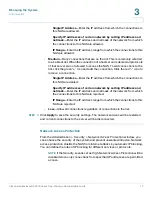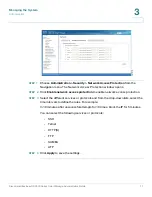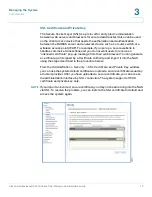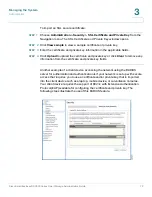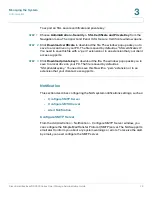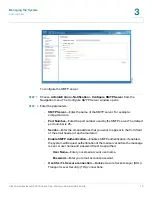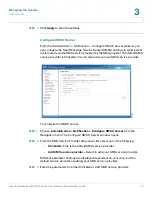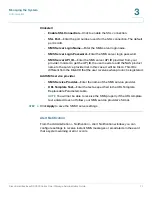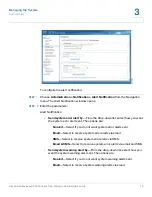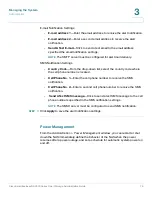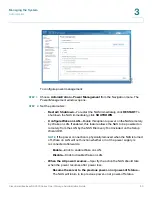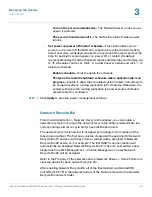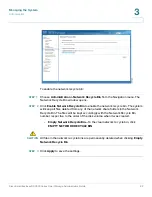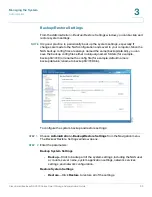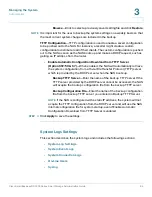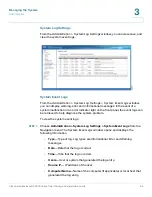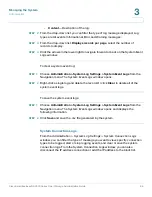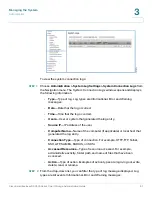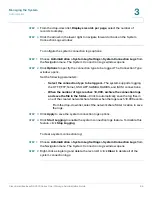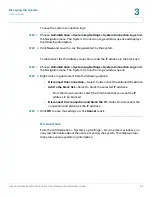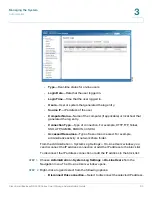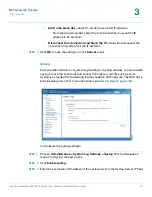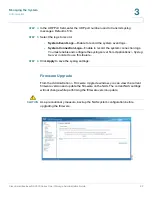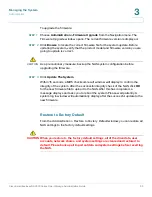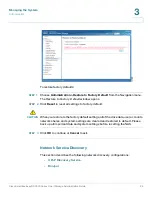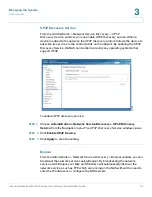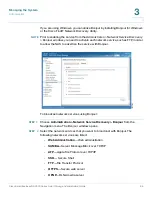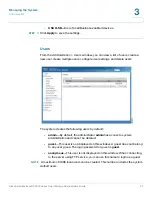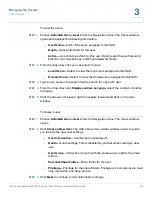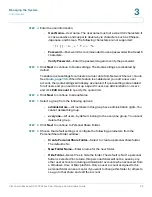
Managing the System
Administration
Cisco Small Business NSS300 Series Smart Storage Administration Guide
84
3
-
Browse
—Click to select a previously saved setting file and click
Restore
.
NOTE
It is important for the user to backup the system settings on a weekly basis so that
the most current system changes are included in the backup.
TFTP Configuration
—TFTP configuration is used to enable a saved configuration
to be pushed out to the NAS. For instance, a reseller might create a custom
configuration to distribute to all of their clients. The custom configuration is pushed
out to the NAS as soon as the NAS boots up and makes a DHCP request, such as
getting an IP address from the router.
•
Enable Automatic Configuration Download from TFTP Server
(Option 66/150 & 67)
—When enabled, the NAS will automatically retrieve
the system configuration from a Trivial File Transfer Protocol (TFTP) server
which is provided by the DHCP server when the NAS boots up.
-
Backup TFTP Server
—Enter the name of the backup TFTP server. If the
TFTP server provided by the DHCP server cannot be accessed, the NAS
will acquire the backup configuration file from the backup TFTP server.
-
Backup Configuration File
—Enter the name of the backup configuration
file from the backup TFTP server you entered in Backup TFTP Server.
NOTE
If the NAS is configured with a static IP address, the system will not
acquire the TFTP configuration from the DHCP server and will use the NAS
internal configuration file for system startup, even if Enable Automatic
Configuration Download from TFTP Server is enabled.
STEP 3
Click
Apply
to save the settings.
System Logs Settings
This section describes the system logs and includes the following sections:
•
•
•
•
•

